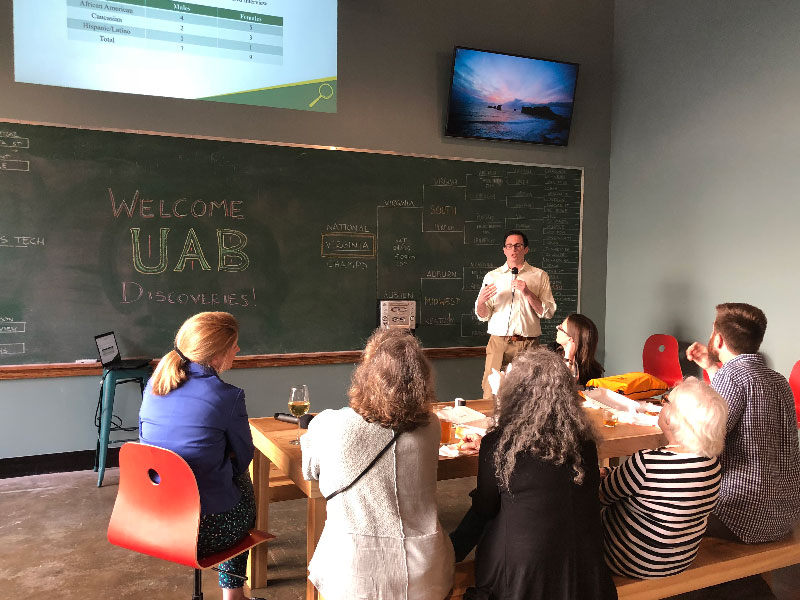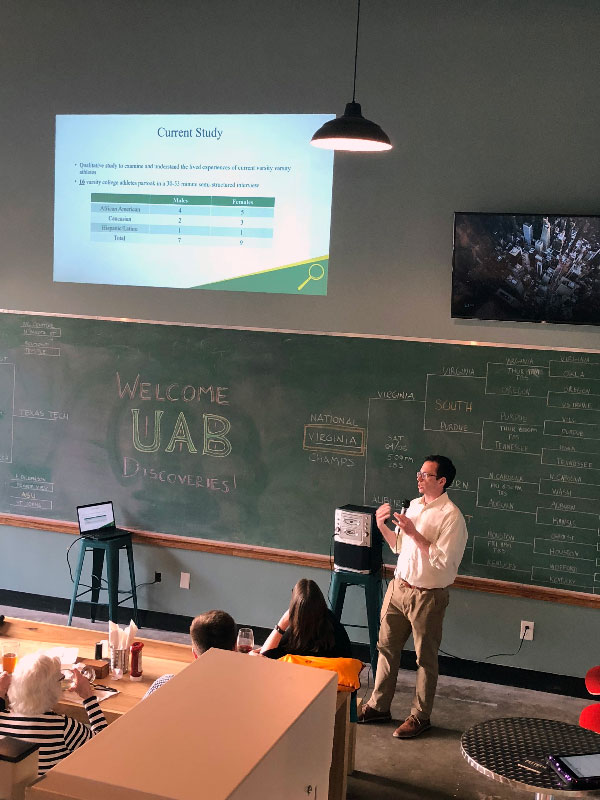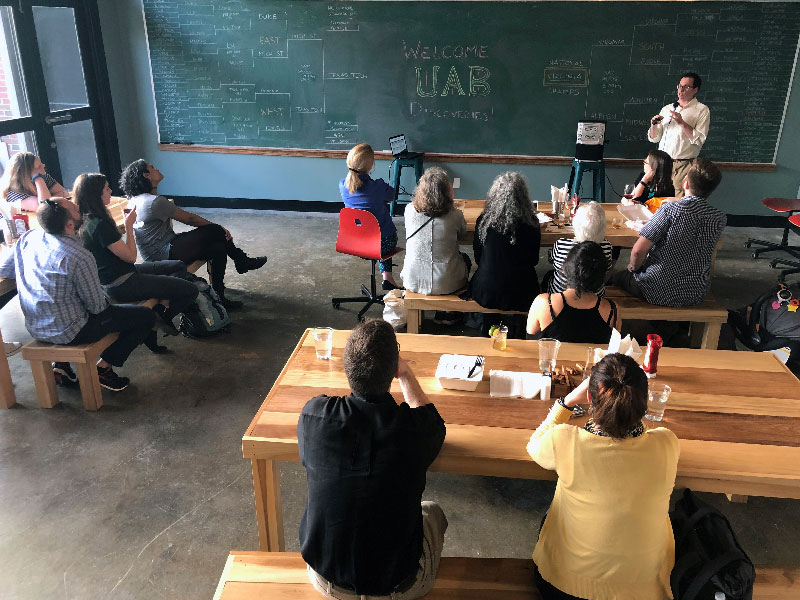“Thirty-seven who saw murder did not call the police”
Though this statement may seem absurd now, this news made the front page of the New York Times on March 27, 1964. This incident led to a critical study, which showed this may have been caused because of something now commonly known as the Bystander Effect. The Bystander Effect is in simple terms diffusion of responsibility – a person is less likely to intervene in a situation if more people are present. The more people who witness a misdeed may feel that someone else will help the victim so they do not have to take up the responsibility to act in the situation.
 Alexander Hoffman, a UAB doctoral candidate in the Department of Human Studies, studies bystander behavior and interventions with college athletes to create improved training programs. Work in the area of bystander effect began in the 1980s when the service industry (bars and restaurants) were being sued by the patrons after being drunk. So, to protect themselves, the service industry trained people to identify and handle the situation when patrons were too drunk. Similar training was implemented across college campuses in the 1990s and 2000s to reduce the increasing number of sexual assault cases prevalent at that time.
Alexander Hoffman, a UAB doctoral candidate in the Department of Human Studies, studies bystander behavior and interventions with college athletes to create improved training programs. Work in the area of bystander effect began in the 1980s when the service industry (bars and restaurants) were being sued by the patrons after being drunk. So, to protect themselves, the service industry trained people to identify and handle the situation when patrons were too drunk. Similar training was implemented across college campuses in the 1990s and 2000s to reduce the increasing number of sexual assault cases prevalent at that time.
The National Collegiate Athletic Association (NCAA) has created and implemented training programs like “Step Up” and “my Playbook – The freshman experience.” Hoffman said these programs are primarily focused on preventing cases of sexual assault and “my Playbook” only has a small module of alcohol and drug abuse. These programs are very effective in reducing the occurrence of sexual assault, but there is a void in training about binge drinking and risky sexual behavior when under the influence of alcohol.
Hoffman’s research focus is on understanding the needs and problems surrounding this topic in order to create programs that would address the area of alcohol use more effectively. He is interviewing college athletes to understand the significant areas that need to be considered in designing a training program. So far, the themes that appear to be of significance are individual choices, teammate relationships, pregame (consuming alcohol before going to bars) and a wish for increased knowledge. The study also identifies a need for further research to help college athletes navigate alcohol-related risky situations, especially understanding the grey-line of consent, how to appropriately intervene in physical situations and to empower athletes to intervene. Future bystander intervention programs need to be relatable to current college athletes and may be more effective if taught by former athletes/survivor of events. The athletes also need more education on the warning signs and symptoms of heavy alcohol intoxication.
 These bystander intervention programs are essential in the life of a college athlete, but are also beneficial to the general audience and can be applied to the community for other issues. Another similar cohort of students with a need for such interventions would be college students in Greek life, wherein many similar situations may occur. Future work based on this study includes designing a program with different modules addressing different aspects of alcohol-related risky behavior and ensuring that these modules are delivered by an appropriate person to whom the listeners can connect.
These bystander intervention programs are essential in the life of a college athlete, but are also beneficial to the general audience and can be applied to the community for other issues. Another similar cohort of students with a need for such interventions would be college students in Greek life, wherein many similar situations may occur. Future work based on this study includes designing a program with different modules addressing different aspects of alcohol-related risky behavior and ensuring that these modules are delivered by an appropriate person to whom the listeners can connect.
There are many other insights that have been gained from the current work that may be used to develop future bystander programs. Hoffman mentions not a lot of work has been done to study differences in the behavior among different genders and races. He finds that females are more likely to rely on their intuitive sense to know when to intervene, whereas males need to see overt signs from the victim before they may intervene. The likelihood of intervention is not gender dependent and may vary from situation to situation. Moreover, the trigger for someone to intervene stems primarily from the family values toward other teammates and from the desire to give back to the community rather than from anger or fear.
“There is much work required to understand the needs of different individuals in this area and spread awareness of these tools in the society, and the first step is in recognizing the need and to work toward solving it actively, so that we may not have a victim when there are multiple bystanders.
